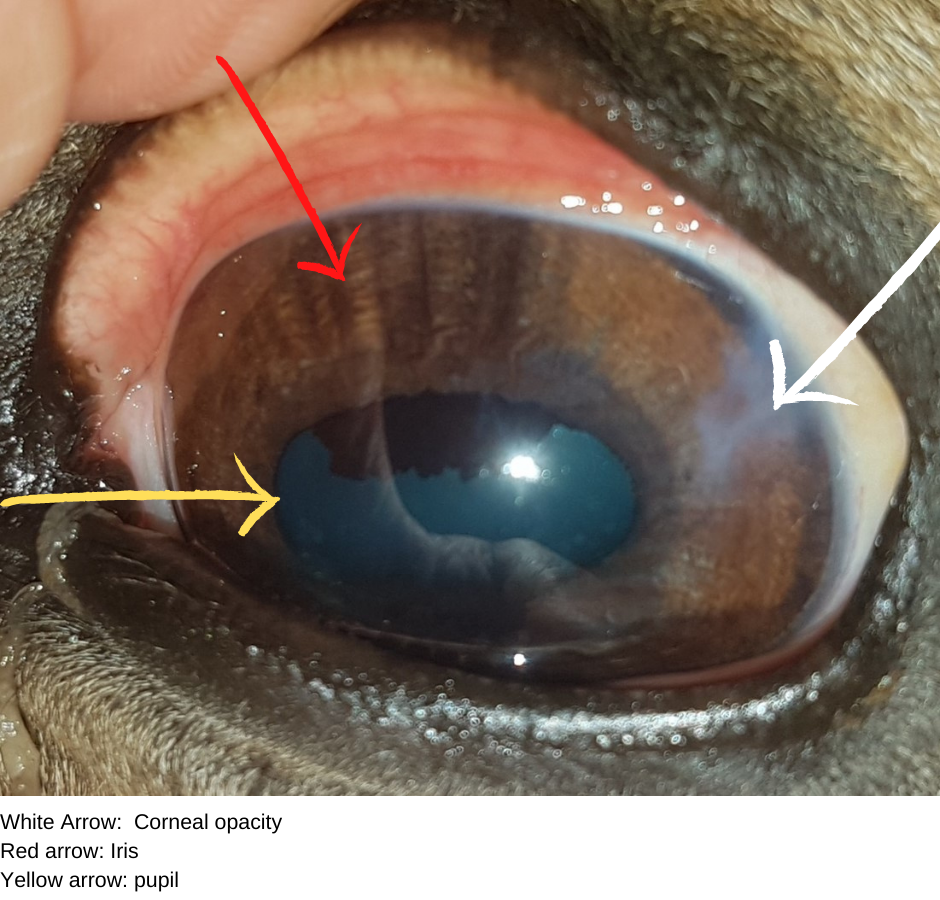Common causes of corneal opacity
November 1, 2021
Equine veterinary hospital Comments Off on Standing tieback surgery for ‘roarers’
22
15
18
Following on from our Facebook story about Benny who presented to CEC with corneal opacity, here are two possible reasons for corneal opacity.
- Infiltration of the cornea layers by abnormal cells/tissue. Abnormal cells that can infiltrate the cornea include white blood cells, calcification, cancer cells or fibroblast (scar). White blood cells that infiltrate the cornea generally produces an opacity that is yellowish in colour (more like a focal area of pus, like a pimple). Calcification and fibroblast (scar) are usually white in colour. The most common cancer cell that invades the corneal surface is the squamous cell carcinoma which is pink (like our gum colour) and usually not flat but cauliflower-like (raised and bumpy). Therefore, the appearance and colour of the opacity can possibly provide a clue to what it is.
- Infiltration of the corneal layer by water. This is called corneal oedema. Reasons for this can include local trauma to the cornea, such as a corneal ulcer, where the top layer of the cornea is stripped off, and our normal tears will infiltrate the cornea surrounding the ulcer. The oedema for these cases is usually focal in nature. Another reason for oedema is due to a common eye disease called uveitis, which is inflammation of the iris, the brown part of the eye (red arrow in picture) that controls the size of the pupils (yellow arrow). Due to the inflammation within the iris that is located within the eye, there is generalised inflammation of the eye. This causes inflammation of the cornea as well, and this disrupts the cornea’s ability to maintain a state of desiccation. Hence fluid from the inside of the eye seeps into the corneal layers causing a general haziness of the cornea (like your frosted shower glass).




0 Comments